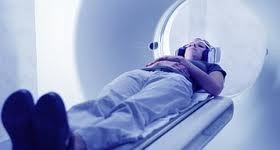ER docs vary widely in use of head CT
by
Brendon Nafziger, DOTmed News Associate Editor | March 09, 2012

If a patient shows up one night in an emergency room complaining of a nasty headache, whether she undergoes a head CT scan depends not just on her condition, but possibly on which doctor happens to be on staff that night, according to the results of a new study.
When looking over one year's worth of records at a busy teaching hospital's ER, researchers found an almost threefold difference among physicians in ordering habits for head CT scans for these atraumatic headaches, even after controlling for patient and condition characteristics.
The authors of the study, published online Friday in the American Journal of Medicine, suggest the Centers for Medicare and Medicaid Services should possibly re-think a related measure the agency uses to gauge hospital outpatient quality and to help curb imaging overuse: examining the amount of CT scans ordered for atraumatic headache in the ER.
"The presence of such significant interphysician variability in head CT ordering for atraumatic headache may indicate that using an emergency department-level use measure is not an appropriate measure of quality, because variation in use of imaging, even within a single institution, is clearly multifactorial," wrote the authors, led by Dr. Luciano M. Prevedello with Brigham and Women's Hospital and Harvard Medical School in Boston.
In fact, this study is the second in only a few weeks to cast doubt on this measure, known as OP-15. Last last month, a study in the Annals of Emergency Medicine suggested that it had a very low accuracy rate, under 17 percent, and that most of the scans it deemed inappropriate might have been justified.
Study results
Of nearly 55,000 patient visits studied over the one-year period at the hospital, almost 5,000 resulted in a head CT scan. Of these, 667 were for patients with atraumatic headaches.
CT ordering rates for this condition varied by physician from a low of 15 percent to a high of 62 percent.
After adjusting for patient factors that could influence whether a doctor would order a scan, such as condition severity, age and gender (older men are more likely to get scanned), a threefold difference between low and high ordering doctors remained, from a low of 21 percent to a high of 60 percent.
Looking at head CTs as a whole, the researchers said ordering rates per doctor varied from 4 percent to 17 percent. When adjusted for patient factors and for conditions -- patients going to the ER for trauma and stroke are understandably more likely to receive head scans -- a nearly twofold difference remained, from 7 percent to 14 percent.
However, contradicting an earlier study, the gender of the doctors and their years of experience had no effect on their head CT ordering rates, the authors said.
The study was run at a 793-bed urban teaching hospital from Jan.1 2009 to Dec. 31 2009.
|
|
|
You Must Be Logged In To Post A Comment
|
